Meeting Medical Market Demands for High-Density Electrical Connectors with Standard and Custom Solutions
The growing demand for high-density electrical connectors in the medical market is being driven by an overwhelming trend towards smaller, lighter, and more ergonomically conscious medical devices.
By John Holloway, Principal Engineer at ATL Technology high-density electrical connectors
These demands can be met with an array of standard and custom solutions, but coming up with the right solution isn’t as straightforward as simply adding more pins to an existing medical connector. Due to a combination of International Electrotechnical Commission (IEC) specifications and other regional safety regulations, designing high-density connectors that aren’t unwieldy or cumbersome is often a challenging task.
High-Density Electrical Connectors
High-density electrical connectors are connectors that have a large number of individual contacts in a relatively small connector body. The demarcation between standard and high-density connectors is arbitrary, but the high-density nomenclature is generally reserved for connectors that have many more contacts than are typically found in comparable connectors with the same shell size.
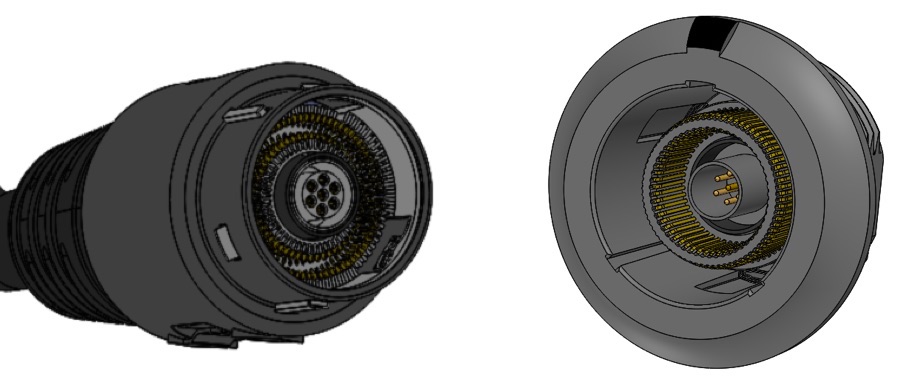
High-density connectors are designed to accommodate many more pins than comparable connectors in the same shell size.
The Growing Demand for High-Density Electrical Connectors
The growing demand for high-density electrical connectors is driven by a number of factors, but especially size, weight, and handling requirements. Component size and weight have long been critical factors in many military and aerospace applications, and are now becoming more important in the medical market as well due to the increasing popularity of portable and patient-worn devices. By increasing the contact density of a given connector, design engineers can boost performance while maintaining the same footprint and minimizing any additional weight. Employing a high-density contact geomoetry can also prevent high-pin-count connectors from being too large and unwieldy for easy, ergonomic handling, which is especially important in high-mating-cycle medical applications, like patient monitoring and imaging equipment.
Medical Application Example: Cardiac Electrophysiology Equipment
High-performance, mission-critical medical applications like cardiac electrophysiology devices, which are responsible for analyzing the heart’s electrical signals and diagnosing various types of arrhythmia, also require high-density electrical connectors.
One such arrhythmia, atrial fibrilation (AFib), is an irregularity in the otherwise normal heartbeat of the left and/or right atria (i.e., the two upper chambers of the heart). AFib disrupts the normal blood flow between the atria and the ventricles (i.e., the two lower chambers of the heart) and increases stroke risk by four to five times since it allows blood clots to form more readily. In fact, AFib is responsible for 15–20% of ischemic strokes caused by clots or fatty plaque deposits in blood vessel linings.1 Between 2.7 million and 6.1 million people in the United States alone are estimated to have AFib and this number is only expected to increase along with the ageing US population, as approximately 2% of people under age 65 and approximately 9% of people 65 or older have AFib.2
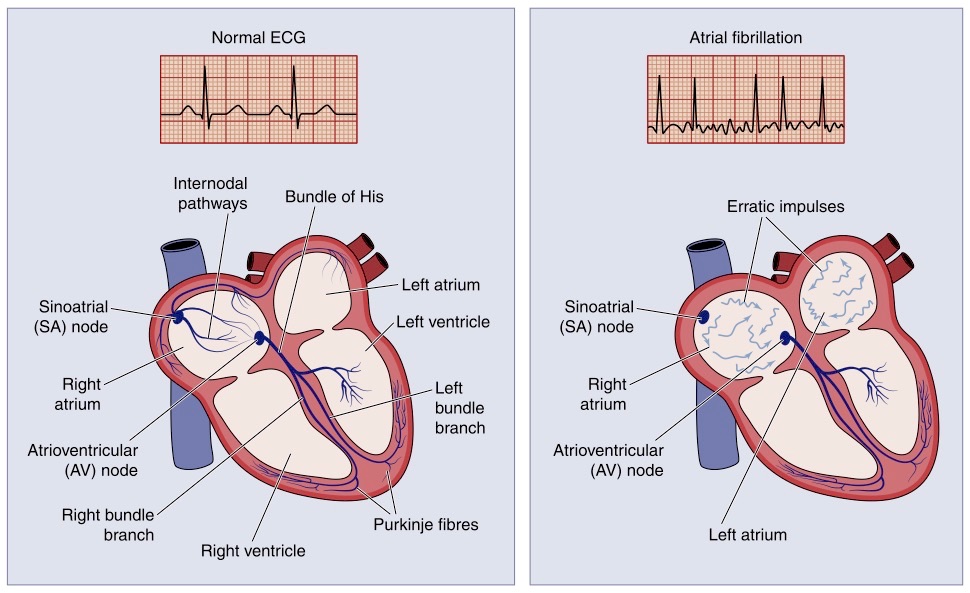
Atrial fibrillation (AFib)
The prevalence of and peril associated with this condition require timely and accurate diagnosis and treatment. In one of the most common electrophysiology procedures used to diagnose AFib, a doctor inserts a catheter into a blood vessel in the heart. These catheters contain small, electrode-laden wires that can be deployed after reaching the atrium to make contact with the cardiac tissue and create a map of the electrical impulses that will help doctors pinpoint the root cause of an arrhythmia, and can collapse or retract to enable insertion and removal.
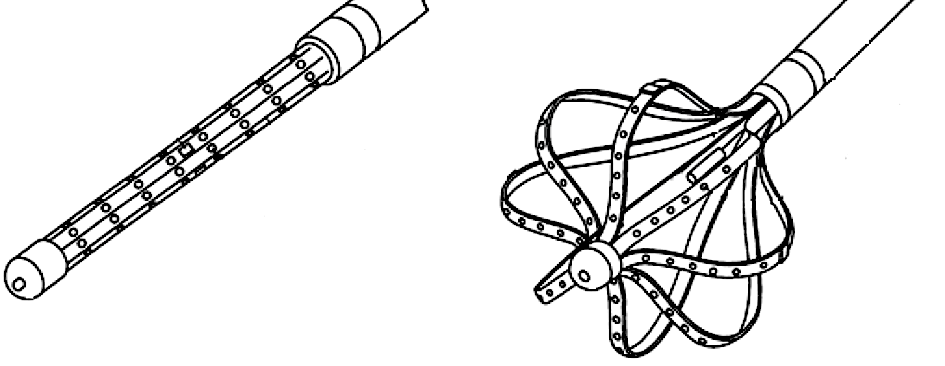
An electrophysiology catheter with 64 electrodes on its deployable and retractable wires.
To improve the resolution of the cardiac map that electrophysiology catheters generate and mititgate the amount of time these procedures take, medical device designers need to increase the number of catheter electrodes by two, three, or even four times, and they need high-density connectors to do so without significantly increasing the size, weight, or flexibility of the device.
High-Density Medical Connector Design Challenges
Since the demand for high-density electrical connectors is largely fueled by the medical device market, complying with safety standards like IEC 60601 is critical.
Creepage and Clearance
International medical device electrical safety standard IEC 60601 has stringent requirements regarding the creepage and clearance distances between connector pins. Clearance is the straight-line distance (or air gap) between conductors and creepage is the shortest surface distance between conductors.
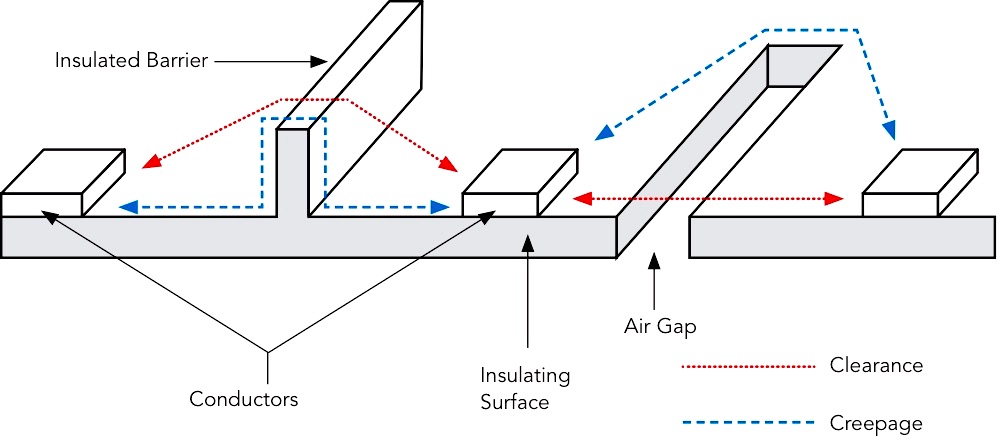
Clearance and creepage
These contact spacing requirements are based upon Means of Patient Protection (MOPP) standards. The IEC 60601-1 specification defines medical electronics that come into direct contact with the heart, like electrophysiology catheters, as Type CF devices, and demands that they comply with two MOPP (2MOPP) specifications, which dictate larger clearance and creepage distances — twice that of 1MOPP — to ensure patient safety.
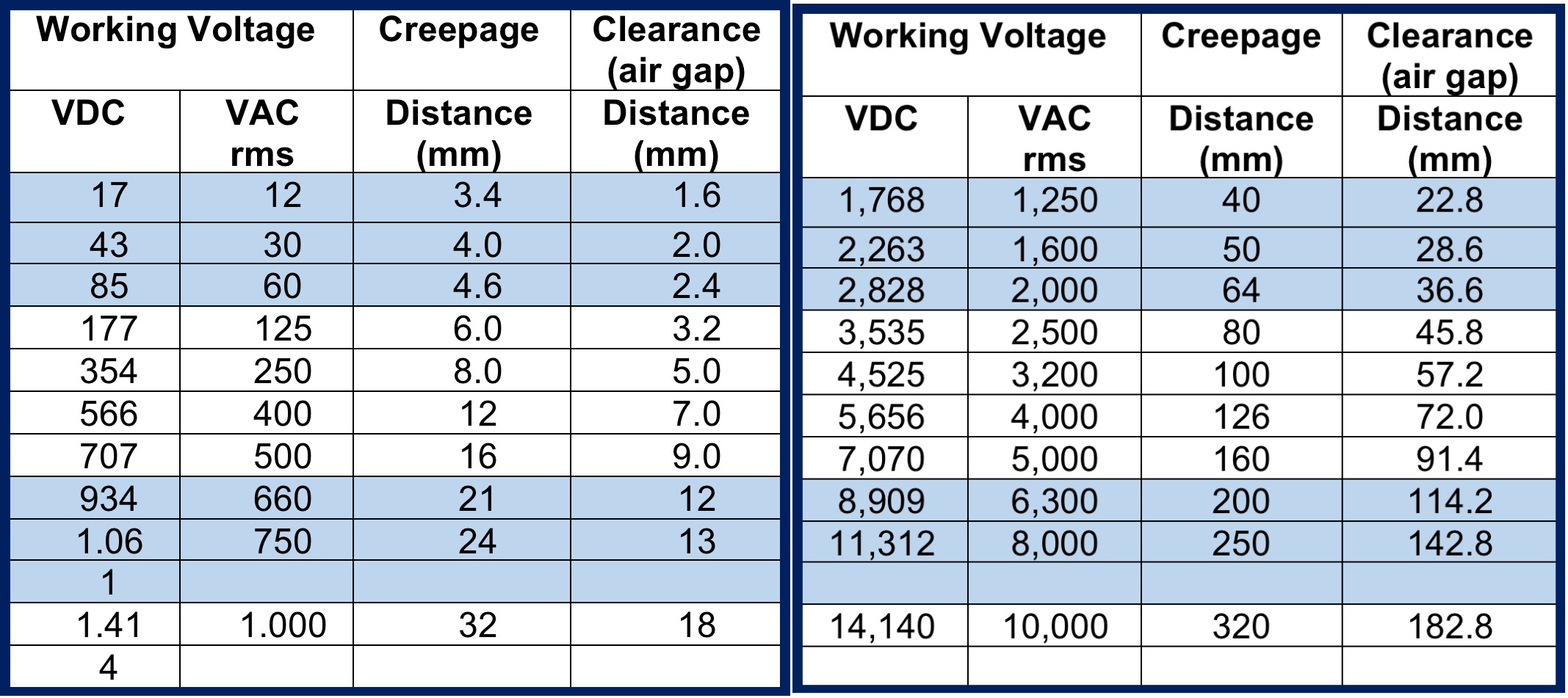
Clearance and creepage requirements for MOPP (left) and 2MOPP (right) compliance.
IEC 60601 also mandates additional cautionary measures for connectors that mix power and signal level voltages, requiring additional space between power pins of opposite polarity and exposed conductive surfaces, as well as between power and signal pins.
Touch-Proof Compliance
Another requirement of the IEC 60601 standard is that connector contacts must be touch-proof (i.e., designed to prevent people from being able to readily touch the electrical contacts with their finger). Touch‑proof compliance is verified using a jointed metal test probe designed to simulate a small human finger and governed by dimensions specified in the standard. In touch-proof testing, a connector’s electrical contacts are attached to one pole of a continuity meter and the test probe is attached to the other pole. The test probe is then applied to the connector from every conceivable angle of entry. If no electrical continuity occurs during the probing process, the connector is deemed touch-proof compliant.
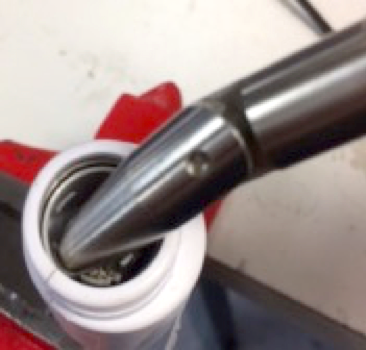
Test probes defined by the IEC and designed to simulate a small human finger are used to test connectors for touch-proof compliance.
Locking Mechanisms
For additional safety, the IEC prescribes locking mechanisms designed to prevent accidental disconnections that could disrupt medical procedures. Locking mechanisms often compete for space with electrical connections and are available in many styles — including button-activated thumb latches, twist-action rotary locks, and popular, passive, push/pull locking systems that integrate latching mechanisms into the mating mechanism, eliminating the secondary action required by other options — to help mitigate the design challenges they present.

Passive, push/pull locking mechanisms provide best-in-class functionality. These mechanisms engage with normal, low-force mating (left), prevent the receptacle from accidentally releasing even if the cord is pulled (center), and are easy to unmate (right).
IEC 60601 Compliant Connectors
Some connectors can employ simple approaches to the challenges of IEC 60601 requirements. For instance, when the total number of contacts is fairly low, simply spacing the pins at the required values accomplishes the task.
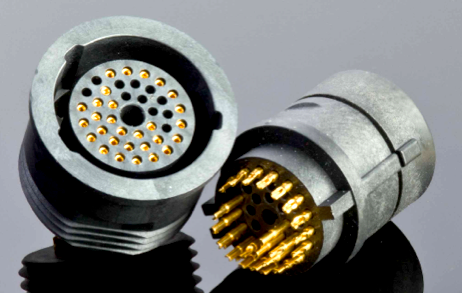
This custom connector is approximately one inch in diameter, an ergonomically comfortable size, and can accept up to 40 pins.
As the demand for more pins increases, some designers use multiple off-the-shelf connectors to more easily meet IEC requirements. However, this solution often results in several undesirable consequences.
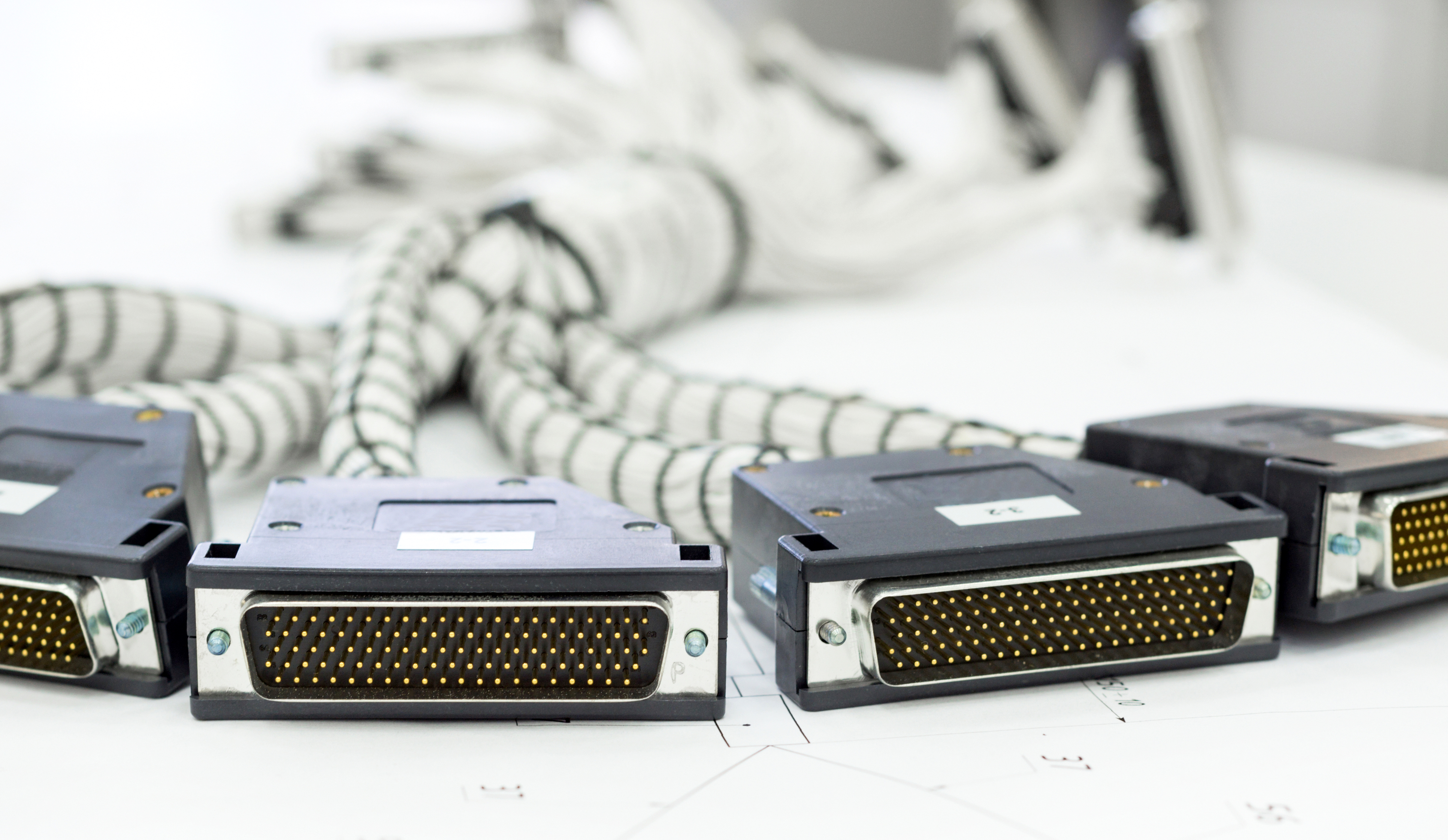
Multiple off-the-shelf connectors can be used to meet IEC requirements, but often cause other design issues.
The use of multiple off-the-shelf connectors means that operators are responsible for properly mating each plug to its respective receptacle and that the physical keying options intended to prevent mismating are limited, leaving operators to rely upon labeling and patients to rely upon caregivers with varying levels of equipment handling expertise to achieve multiple properly mated connections to ensure their safety. Cable harnesses also become more complex and unwieldy with the use of multiple connectors, leaving yet more room for operator error and undesirable consequences.
Standard High-Density Electrical Connectors
In response to the growing need for higher density connectors across multiple markets, many manufacturers are developing standard, off-the-shelf high‑density connector solutions, which can be an effective and affordable choice when the connector meets the needs of a given application and production volumes are in the low to medium range (e.g., up to 20,000 or 50,000, depending upon complexity).
However, the development of standard high-density connector products involves some compromises. Connector manufacturers have to consider myriad characteristics in order to develop standard offerings that satisfy a broad range of both application requirements and budget demands, including material and plating characteristics and costs, pin-counts, creepage and clearance, lifecycle, operating voltages, and whether combining signal and power in the same layout or adding features like locking mechanisms, shielding, sealing, polarization, color-coding, and more is likely to be required or cost-effective. Well-established connector manufacturers with access to key industry thought leaders can succeed with this strategy but cannot possibly arrive at a single configuration that is so universal that it can be used by everyone.
This challenge is being addressed in two ways. The first is to develop standard high-density connector configurations that employ a modular contact system capable of satisfying various application demands with standard parts. The second, for when standard offerings still don’t meet the need, is to design a custom configuration based on an established contact system, as this both shortens time to market and reduces investment and risk.
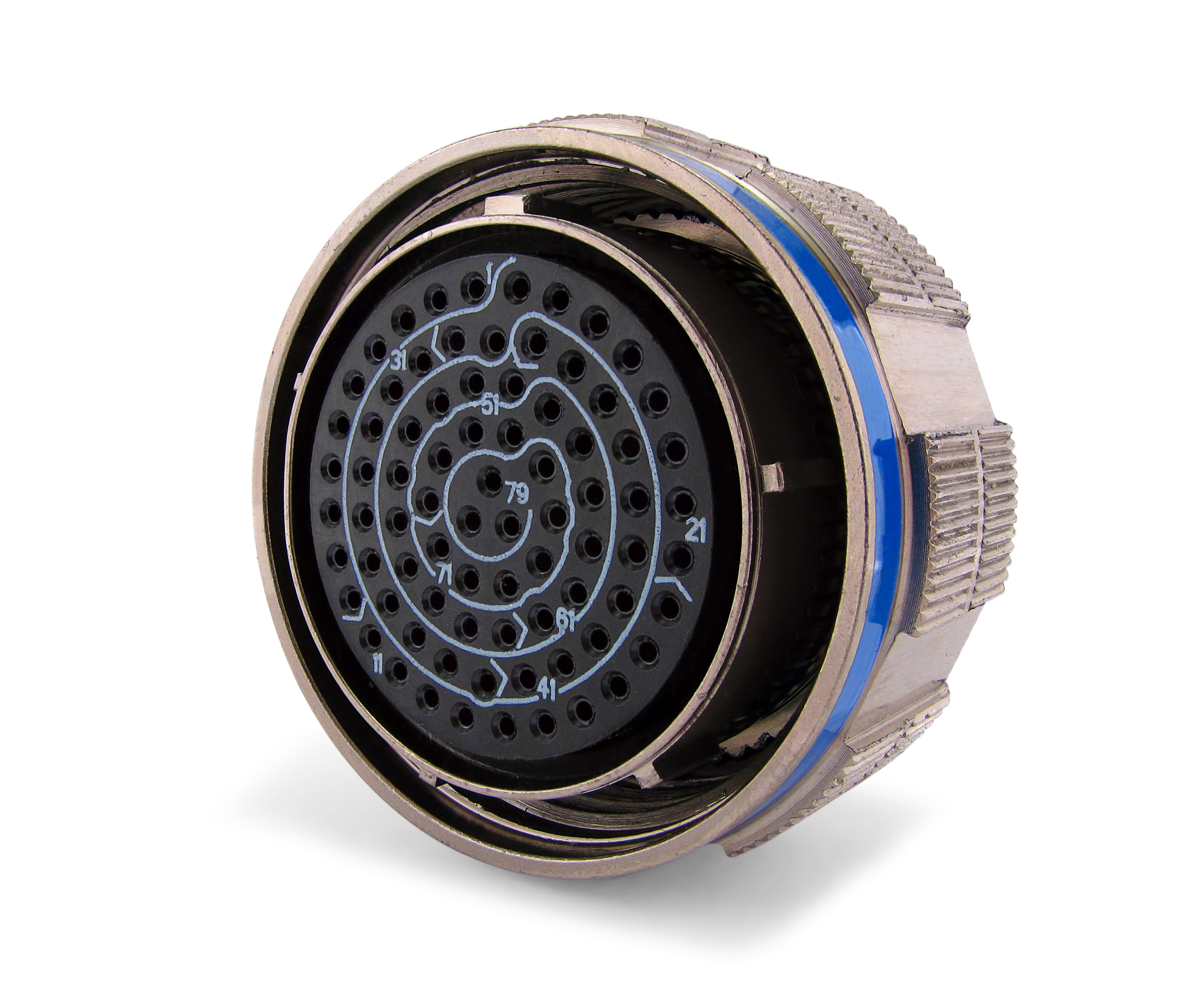
This standard, high-density (79-pin) connector has a metal shell with an outer diameter of 45mm, a threaded, locking coupling nut, a waterproof seal, and a creepage/clearance dimension of 1.6mm. It is rated for 175°C and a high cycle life. When evaluating this standard offering, one thing designers should consider is whether the non-passive screw coupling is the right locking mechanism for the given application.
Custom High-Density Electrical Connectors
Custom connectors are often the best solution for high-density applications. Standard product offerings are likely to include features not required by the given application because, when selecting a standard product, it is necessary to select one that has at least the required attributes, and such solutions will often include features beyond the minimum application requirements since they’re designed to satisfy the demands of as many applications as possible. For example, standard connectors are typically produced using expensive materials capable of handling high temperatures, chemical exposure, and various sterilization processes, and often include additional features intended to satisfy a broad range of application demands, such as sealing, latching, and high cycle-life.
Since custom solutions are engineered to meet the needs of a specific application, they can easily avoid the additional cost and complexity of unnecessary features and capabilities. For instance, if a connector is not intended for use in harsh, high-mating-cycle environments, such as autoclavable medical devices or one exposed to splash or accidental back-out risk, a custom solution could employ less expensive materials and skip the addition of sealing and latching features.
There are also other advantages. In medical applications that require IEC 60601 compliance, custom solutions can be designed to meet the exact creepage and clearance distances the application demands without wasting board space or risking noncompliance. As such, custom connectors often offer smaller, more cost-effective solutions with improved ergonomics.
High-Density Connectors Continue to Evolve
As the demand for high-density connectors continues to accelerate across multiple markets, the demand for standard and custom solutions with combined or hybrid functionality in addition to high pin-counts will continue to increase as well. High-density connectors that combine power pins and low-voltage pins, integrate fiber optic contacts for illumination or data transfer, or employ fluidic or pneumatic connections for saline flush, suction, or inflation functionality are already being introduced to market and are growing in popularity.
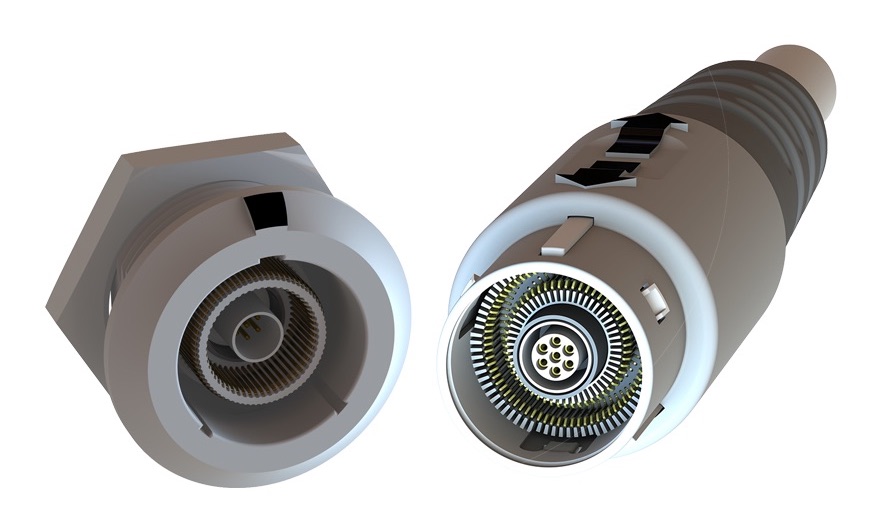
This mating pair of standard high-density connectors combines 128 low-voltage contacts and seven power pins in a circular plastic shell with a diameter of less than 18mm and a state-of-the art passive locking system, providing size, weight, security, performance, and handling benefits ideal for use in a broad range of demanding applications.
The expanding availability of hybrid high-density connectors supports the development of advanced and innovative products. Soon, it may be possible to combine diagnostic and therapeutic functionality (e.g., cardiac mapping, pressure sensing, or imaging functionality with cardiac ablation, stent introduction, or valve placement capabilities) in a single connector.
High-density connectors will continue to evolve by leveraging the miniaturization, high-precision processing, and hybrid capabilities of established technologies and, as the practical limits these technologies are approached, engineers are sure to develop new connection technologies to achieve further improvements in contact density, size, weight, performance, and capabilities without compromising on reliability and safety.
To see more technical articles that will expand your connector knowledge, download the free 2019 How-to-Specify eBook now.
Like this article? Check out our other Connector Basics articles, our Medical Market Page, and our 2019 Article Archive.
Article References
- Mozaffarian D, Benjamin EJ, Go AS, Arnett DK, Blaha MJ, Cushman M, et al. “Heart Disease and Stroke Statistics — 2015 Update: A Report From the American Heart Association.” Circulation. 2015;131:e29–e322.
- January CT, Wann LS, Alpert JS, Calkins H, Cigarroa JE, Cleveland JC Jr, et al. “2014 AHA/ACC/HRS Guideline for the Management of Patients with Atrial Fibrillation.” Journal of the American College of Cardiology. 2014;64(21):2246–80.





